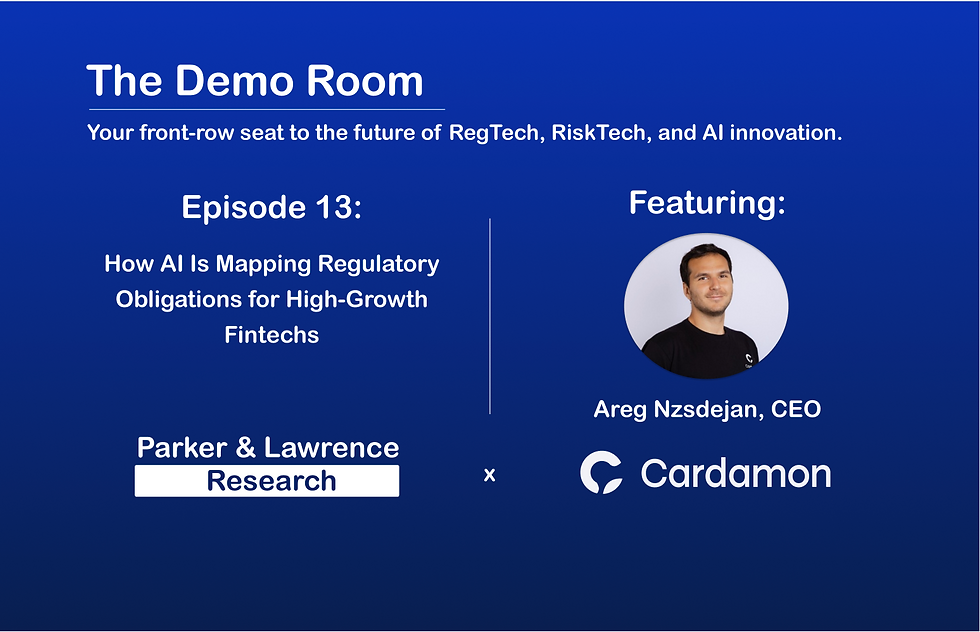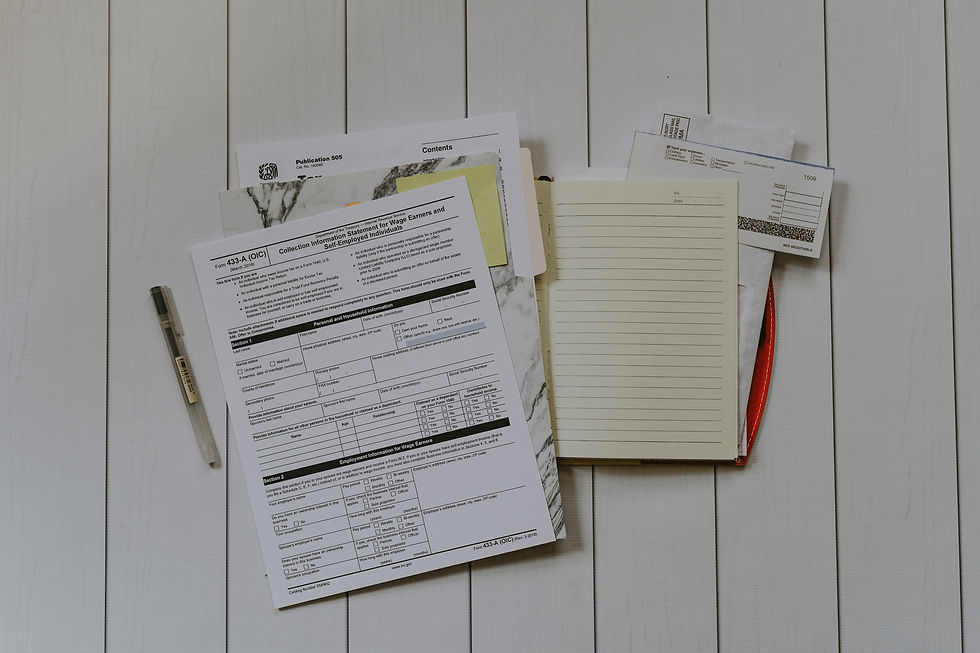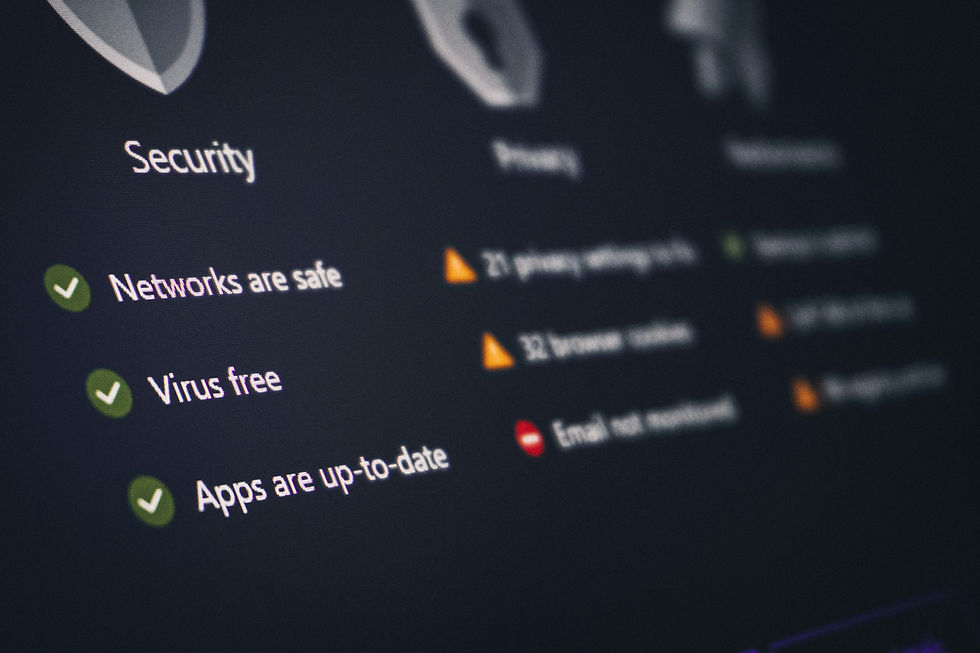How AI and IoT Are Redefining ESG Risk in Mining and Infrastructure (Demo Room #10)
- Michael Lawrence

- Jul 2
- 6 min read
Updated: Nov 27
Welcome to The Demo Room – your front-row seat to the future of RegTech, RiskTech, and AI innovation.
In this series, we document our research interviews with the most forward-thinking vendors tackling the industry's biggest challenges. Each blog is built around a comprehensive product demo, providing clear insights into how these innovations address industry challenges.
On this occasion, we spoke to Pieter-Paul Mooijman, VP of Market Growth at Insight Terra.
-
Physical risk across mining, infrastructure and heavy industry is escalating rapidly, putting three broad groups in jeopardy:
Operational Personnel and Local Communities including on-site staff, contractors, and residents living near high-risk facilities who face direct health and safety threats.
Asset Owners and Operators such as mining firms, infrastructure companies, and developers whose physical assets, project timelines, and ESG obligations are jeopardised.
Capital Providers and Financial Backers, from institutional investors and insurers to lenders and ratings agencies, all of whom carry exposure to ESG failures, regulatory sanctions, and financial loss through direct or indirect holdings.
Five systemic problems are at play:
Increasing environmental risk exposure: Global landslides now cost $20 billion annually. In the U.S. alone, 2023 brought 28 separate billion-dollar weather disasters, totalling $93 billion in damages.
Delays caused by environmental incidents: Weather-related delays impact 45% of global construction projects each year, leading to billions in cost overruns and lost revenue.
Chronic talent shortages: engineering shortfalls are projected to reach 1 million globally by 2030, and the U.S. alone expects a 3 million skilled technician gap by 2033. In mining, new safety standards are compounding the issue, requiring each tailings dam (a structure used to store mining waste) to have an independent Engineer of Record (the qualified engineer legally responsible for a structure’s integrity and monitoring).
Low digital maturity: Mining is 30–40% less digitally mature than comparable sectors like automotive, limiting its ability to modernise risk management.
Tightening regulations and ESG pressures: Frameworks like the GISTM in mining and the EU’s broader CSRD are driving a shift from periodic reporting to continuous, auditable environmental oversight.
These pressures aren’t theoretical. In 2019, Vale’s Brumadinho tailings dam collapsed, killing 270 people and causing $6.3 billion in damages. Vale had prior knowledge of sensor issues at the site, but failed to act in time. The incident stands as a stark warning: fragmented data, outdated inspection processes and reactive monitoring can have catastrophic human, environmental and financial costs.
And Brumadinho was not an isolated event. As of June 2025, there have already been six major tailings dam failures around the world. These incidents are leaving lasting scars; contaminated water systems, damaged ecosystems, and devastated communities. In Zambia’s Copperbelt, a recent dam collapse released the equivalent of over 20 Olympic-sized swimming pools of toxic waste into local waterways. Five months on, residents in nearby Kitwe are still reliant on bottled water. The long-term consequences for livelihoods, farmland and public health remain incalculable.
The Problem for Firms
Despite rising risks, most mining and infrastructure firms remain stuck with slow, manual and siloed workflows:
Data Latency: On-site checks may occur only once a month, leaving a huge window for problems to develop undetected. Further, getting data from remote sites may require days of travel and manual downloads and be costly..
Data Quality: Even when data is collected, it is often unreliable due to rudimentary or manual methods.
Data Fragmentation: The challenge isn’t only on site. Engineers must juggle disparate dashboards, file formats and devices, with critical information split across legacy systems, spreadsheets, and handwritten notes.
Insufficient responses: Because data is often outdated, or of low quality, and alerts are only triggered after a breach, teams can only operate reactively to issues that have already occurred.
Compliance burden: Regulators now expect rigorous, auditable environmental data. But compiling this information often involves painful manual processes that drain already overstretched teams.
This lack of transparency creates a dangerous illusion of control. In reality, many organisations are operating in the dark on high-stakes matters – unable to see emerging problems until they become crises.
This environment is hard on people. Engineers spend more time compiling reports than analysing data. Decision-makers get summaries that are out of date the moment they’re printed. Meanwhile, the board is expected to sign off on ESG risks they can’t see in real time.
The Costs of Unmanaged ESG Risk
Delays in data, combined with poor visibility and reactive operations, lead to increased compliance costs, unplanned downtime, reputational damage, and exposure to regulatory penalties; all of which can significantly affect margins and investor confidence.
A Solution

Insight Terra’s platform was built to directly address the chaos and delay that firms experience on the ground. Its goal is simple: provide a real-time, unified picture of environmental risk, so that action can be taken before incidents escalate.
Unified real-time data ingestion
The platform integrates sensor data from any source, from ground-based IoT to satellite imagery, into a single cloud-based dashboard. Whether the sensor is new or legacy, ground-level or airborne, the platform connects it and streams its output in real time.
For example, at Anglo American’s El Soldado mine, Insight Terra ingests 500+ data points, from nine different sensor types across 108 instruments, into its platform, giving the site’s team and its Engineer of Record a single source of insight. Crucially, this means no more jumping between tools.
Embedded escalation workflows
Rather than simply flagging out-of-range data, the platform maps sensor readings against predefined safety thresholds and TARPs (Trigger Action Response Plans). When conditions deviate, alerts are automatically issued via SMS, email, or on-screen, with recommended actions already in place.
AI-powered anomaly detection enhances early warning, while built-in audit trails ensure regulatory compliance.
User-friendly tools for real operations
Engineers and managers can view intuitive heatmaps, graphs, and even 3D models with sensor overlays. Drone imagery and satellite visuals can be combined with sensor data to provide context. Managers can generate automated reports, and compliance teams can access full validation logs.
Proactive, real-time alerts
Key personnel are sent proactive alerts whenever measurements or readings exceed predetermined thresholds for safety, so that they can take timely actions. The system ensures that the right person is given the right information so that they can take action to avoid climate or environmental damage before it happens.
Flexible, scalable architecture
Clients can start with one application (e.g. tailings monitoring) and expand to others, including slope stability, water management, and ESG metrics. Out-of-the-box integration with enterprise systems (e.g. SCADA) avoids creating yet another data silo.
Robust, Universal Applications
Insight Terra’s platform isn’t limited by geography, infrastructure or connectivity. It can connect to virtually any physical sensor and ingest its data, no matter how remote or extreme the conditions. From solar-powered field communications to satellite uplinks, it’s built for the realities of high-risk environments, not just the control of lab settings.
Parker & Lawrence’s view
Insight Terra could be mistaken for another dashboard company. But this would be a mistake. In reality, it’s a step-change in how environmental risk is detected, managed and mitigated.
We’re especially encouraged by three aspects:
Hands-on connectivity and sensor integration expertise: The Insight Terra team has deep roots in satellite technology and brings a rare ability to manage both data ingestion and the physical installation and connectivity of environmental sensors. This means they can help firms start from scratch and quickly reach industry best practice, without needing to assemble a patchwork of vendors.
Built in close collaboration with engineers: Insight Terra doesn’t attempt to replace geotechnical experts. In fact, it was designed with engineers who shaped its features to enhance their ability to act with confidence.
Significant success stories: At both Anglo American and Sedibelo’s Pilanesberg Platinum Mine, Insight Terra has delivered not just real-time monitoring but regulatory-grade oversight under GISTM.
In our view, Insight Terra exemplifies how AI and IoT can materially shift the ESG risk baseline in mining and infrastructure. This isn’t a flashy innovation driven by AI hype, it’s a targeted response to high-cost failures, regulatory demand, and stretched operational teams. Unlike many AI platforms, it doesn’t simply rely on off-the-shelf language models. Rather, it tackles the hard, messy problem of physical-world data acquisition, quality control and actionability.
We believe that in the coming years, continuous digital monitoring will become an industry norm, just as electronic financial reporting did in banking. The firms that adopt these tools early will not only avoid disasters, they’ll also build trust with regulators, insurers and communities.
Insight Terra is an exciting example of the kind of platform that makes this shift to proactive risk management possible. And, looking ahead, beyond asset owners and their immediate stakeholders, we’re excited to see whether this data can power the ESG investment decisions, too. Stay tuned to Parker & Lawrence Research & Insight Terra for the latest developments.
Get involved
Are you ready to become a thought leader? Reach out to discuss our ongoing research initiatives, how they impact your firm and where we can work together to position you at the forefront of your industry.



